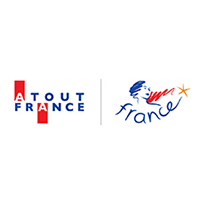Cambodia
Name: Pursat or Pouthisat
Khmer name: ខេត្តពោធិ៍សាត់
Status: province
Area : 12,692 km²
Population : 477,750 inhabitants
Pursat is one of the most visited provinces in Cambodia. It is a beautiful place worth stopping by. There are many natural sites to explore, and you'll also have the chance to discover the province’s diverse cultures and rural areas.
Today
Today, Pursat Province is quickly gaining popularity as a tourist destination in Cambodia. It is the fourth largest province in the kingdom, with an area of approximately 12,700 km². Although Pursat does not have ancient temples, it is well known for the history of the war between the Siamese and the Khmer before the French colonization.
Upon arriving in the provincial capital of Pursat, you’ll see many woodworking workshops. The town lies along the great Cardamom Forest, where cardamom plants—the namesake spice and one of the region’s resources—grow. You’ll meet locals working with teak wood, sandalwood, and rubberwood. Numerous oil palm trees are also cultivated in Pursat. As you walk through the city streets, you’ll pass many shops selling wood carvings and furniture.
Toponymy
The name Pursat comes from a tree called Po Ro Sat. According to legend, this tree floated down the river, sprouted, and gradually grew in the province. Years later, Po Ro Sat became Po Sat, then Pursat. The region is also known for its large orange production and is nicknamed Krauch Po Sat, which means "orange of Pursat."
Attractions in Pursat
Wat Bakan
Wat Bakan Temple is known as one of the oldest and most visited temples in Cambodia. It is considered a major site of Buddhist worship.
Phnom Ba Klas
Ba Klas Mountain is a natural and cultural site located in Tnaot Chum village, within Krakor District, about 20 kilometers east of Pursat. There, you can enjoy beautiful scenery with lush vegetation. On the hills of this part of the region, you’ll find many small fruit trees, including kuy and sei gem—fruits highly appreciated by visitors. You can also admire the ruins of an ancient pagoda, which still houses statues and sculptures. Some Khmer people still come to this site to pay their respects.
Visit Baktra Resort
Baktra is a natural site and a tourist resort located about 16 kilometers south of Pursat, along National Road 5. You can go hiking through the forest to a large hill reaching 50 meters high. There, you’ll discover a beautiful landscape of streams, a famous rock formation, and several natural wells.
The Tomb of Oknha Klang Meung
As a famous historical site in Cambodia, the tomb of the Cambodian hero Oknha Klang Meung is a must-see when visiting Pursat. According to history, he led and won the Khmer war against the Siamese army in 1482.
The Neakta Kliang Meung Site
This is a historical and popular site in Cambodia, located in the commune of Snam Preah, about 6 km south of Pursat town. Most visitors are animist believers who come to venerate Neakta Kliang Meung, the guardian spirit of this sacred place. You will find a large statue of the guardian built in 1993 to replace one destroyed during the war. The area in front of the statue is considered a place of worship. Behind it is where locals gather for traditional games during Khmer New Year and Pchum Ben.
The Pursat River
The Pursat River adds to the town’s charm. It flows into the Tonlé Sap and spans approximately 124,635 hectares over 80 km. Its source lies in the high-precipitation zones atop the Cardamom Mountains. Each year, the province hosts a “run” event organized along the riverbanks, with both men and women participating in 5 to 10 km races. At sunset, the river offers some of the province’s most beautiful scenery.
The Cardamom Mountain Range
While in Pursat, you can also visit the nearby Cardamom Mountains, which are easy to access. On the way, you can stop by the small village of Veal Veng nestled between the mountains. This is also a great opportunity to go hiking through the beautiful forests of the region.
The Floating Village of Kampong Luong
One of the most popular attractions for tourists visiting Pursat is the floating village of Kampong Luong. Located 1.5 hours away by tuk-tuk from the provincial capital, it can be reached by boat across Tonlé Sap Lake. The village moves depending on the season and water level. It recedes by 5 km during the dry season and becomes submerged during the rainy season. With a population of about 10,000, the village is mainly inhabited by Vietnamese people. It is well organized, with infrastructure resembling that of a typical town. You’ll find a school, a temple, a church, grocery stores, a hairdresser, a bar, a gas station, a mosque, shops, and even a small ice factory. From a boat, you can admire well-equipped floating houses—some even have small livestock enclosures or vegetable gardens.
Ride the Bamboo Train
As its name suggests, the “bamboo train” is a bamboo platform mounted on wheels and powered by a small engine, used to travel from village to village. Locals load goods and passengers on it. The train runs on a single track, so when two trains meet, the lighter one is lifted off to let the other pass. This is a cheap and efficient means of transport where you can meet locals and admire beautiful countryside landscapes that reflect Cambodia’s authenticity.
Geography
To the east, Pursat borders Tonlé Sap Lake; to the west, the Cardamom Mountains, which also extend into Koh Kong and Kampot Provinces. To the southwest, it shares a section of border with Thailand and the coast. The province is thus mainly surrounded by mountainous terrain. In the northeast, fertile plains stretch toward Battambang, where you’ll find the country’s largest rice-producing fields. The region encompasses multiple bioregions, from dense mountain forests to fertile lowland plains along the Tonlé Sap Basin. About 58% of the province is covered in forest. The Pursat River marks part of the provincial boundary and flows into the Tonlé Sap.
Climate
Pursat Province has a tropical climate with a dry winter. Rainfall is heavier in summer than in winter. The annual average temperature is 28.8°C, with an average annual rainfall of 1,721.8 mm. February is the driest month, while September is the wettest due to the rainy season. April is the hottest month of the year, and December is the coolest.
Threats to Pursat’s Flora
Aquilaria crassna trees are abundant in Pursat’s forest due to the region’s geography and climate. However, this species is threatened by a parasite called Phaeoacremonium parasitica, just like another tree species that once grew in Pursat and is now also endangered due to large-scale deforestation in the region.
Agarwood, a highly valued and sought-after timber, is also widely used in Pursat. The overexploitation of these trees has led to conservation projects aimed at protecting endangered tree species in the province.
What to do in Pursat?
- To better understand the province, visit cultural and historical sites such as Wat Bakan, the tomb of Oknha Klang Meung, and the Neakta Kliang Meung site
- To discover Pursat’s mountainous regions, go hiking in the Cardamom Mountains and Phnom Ba Klas
- For recreation, visit Baktra Resort or enjoy a walk along the Pursat River
- Don’t miss the bamboo train ride to explore the town’s scenery and small villages
- Complete your journey with a visit to Kampong Luong Floating Village, explore the floating houses, and talk to the very welcoming locals
How to get there
Pursat Province lies along National Road 5 heading toward Battambang, 174 km northwest of Phnom Penh. It is also accessible by boat, train, and several smaller roads. You can take a bus toward Battambang from the capital to reach the province.
Getting around
To get around Pursat, you can choose between motorcycle taxis, tuk-tuks, or the bamboo train.
Best time to visit Pursat
February is the driest month in Pursat Province, making it the best time to visit.

